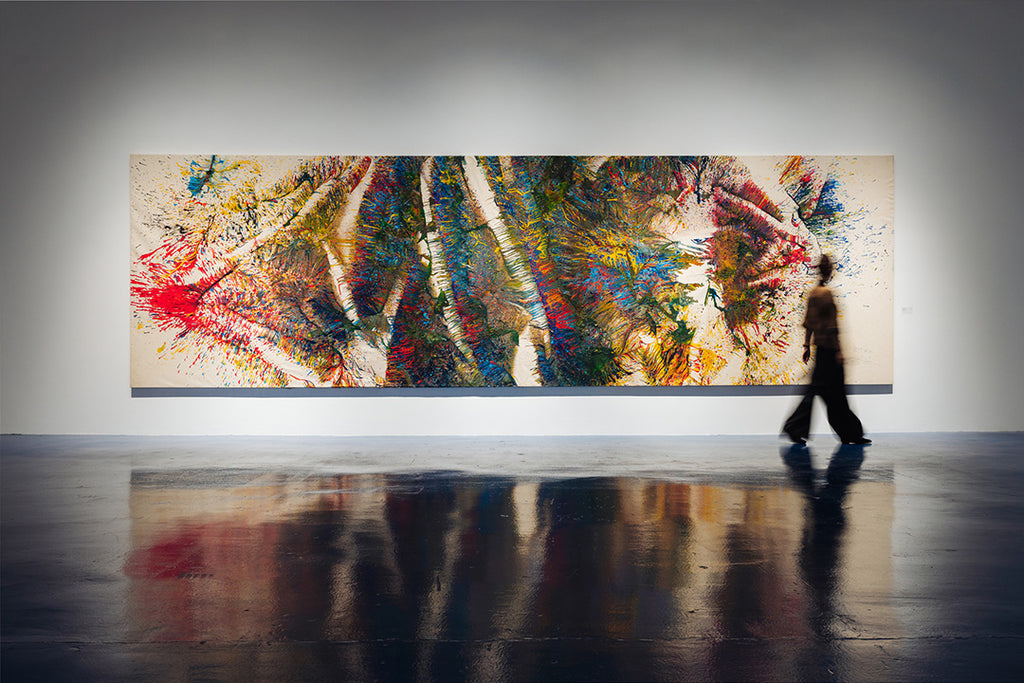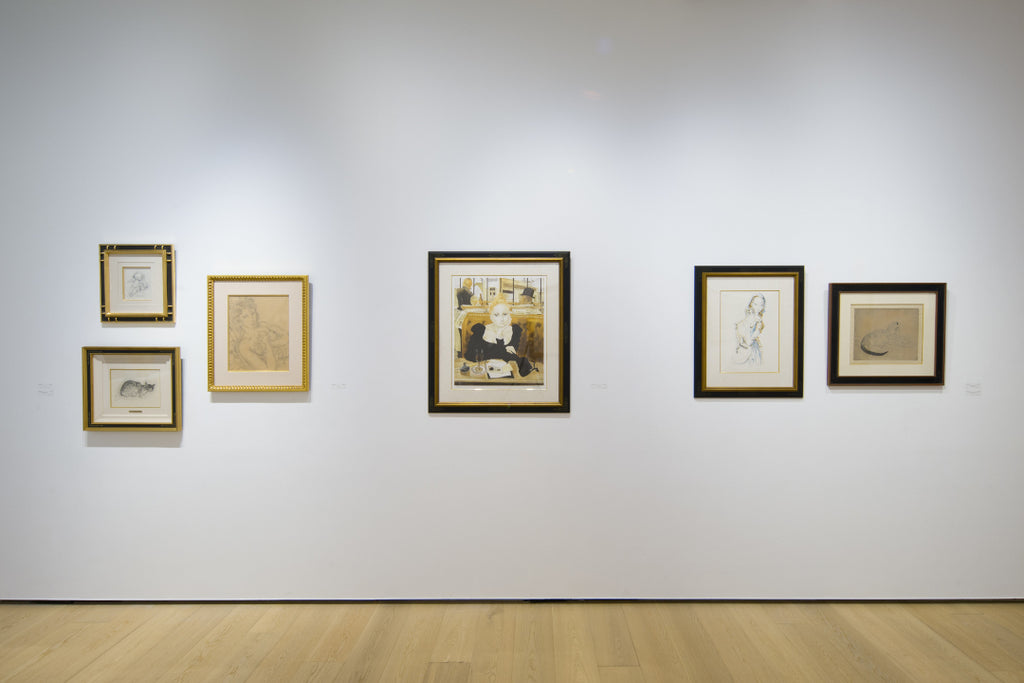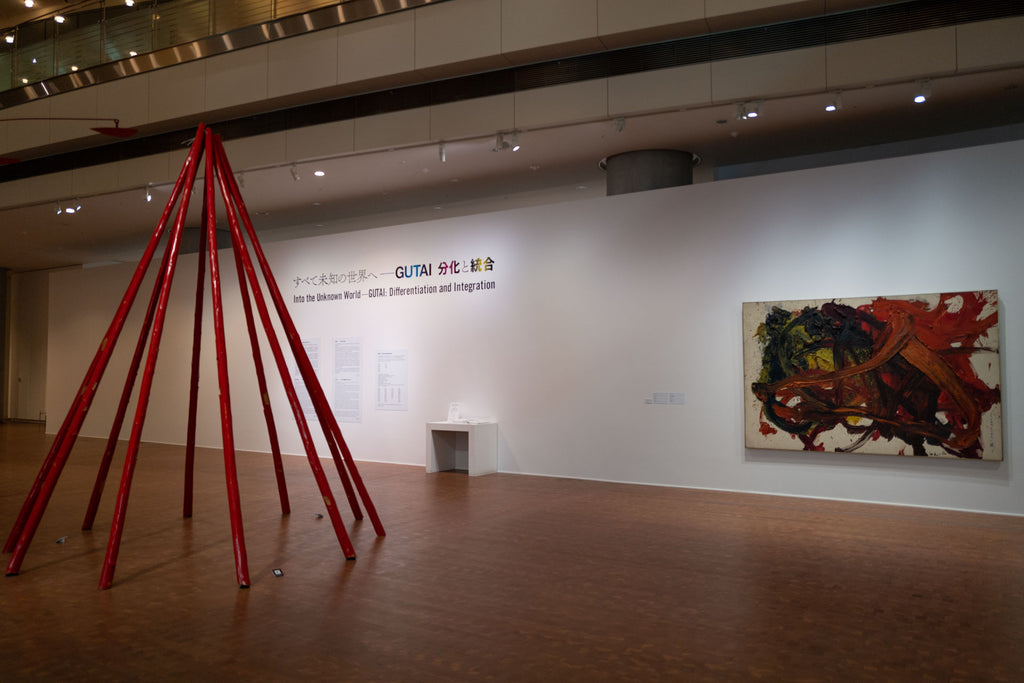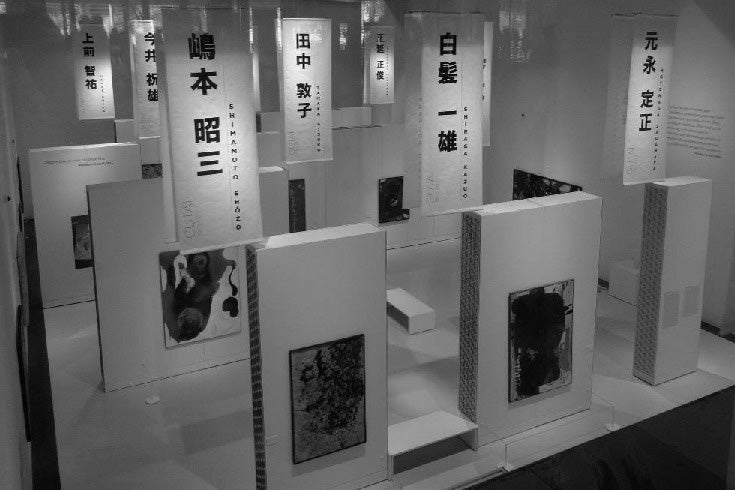ARTICLES
Interview with Tsuyoshi Maekawa: An Artist Who Created a Unique Form of Expression in Fabric
GUTAI STILL ALIVE 2015 vol.1
13/35
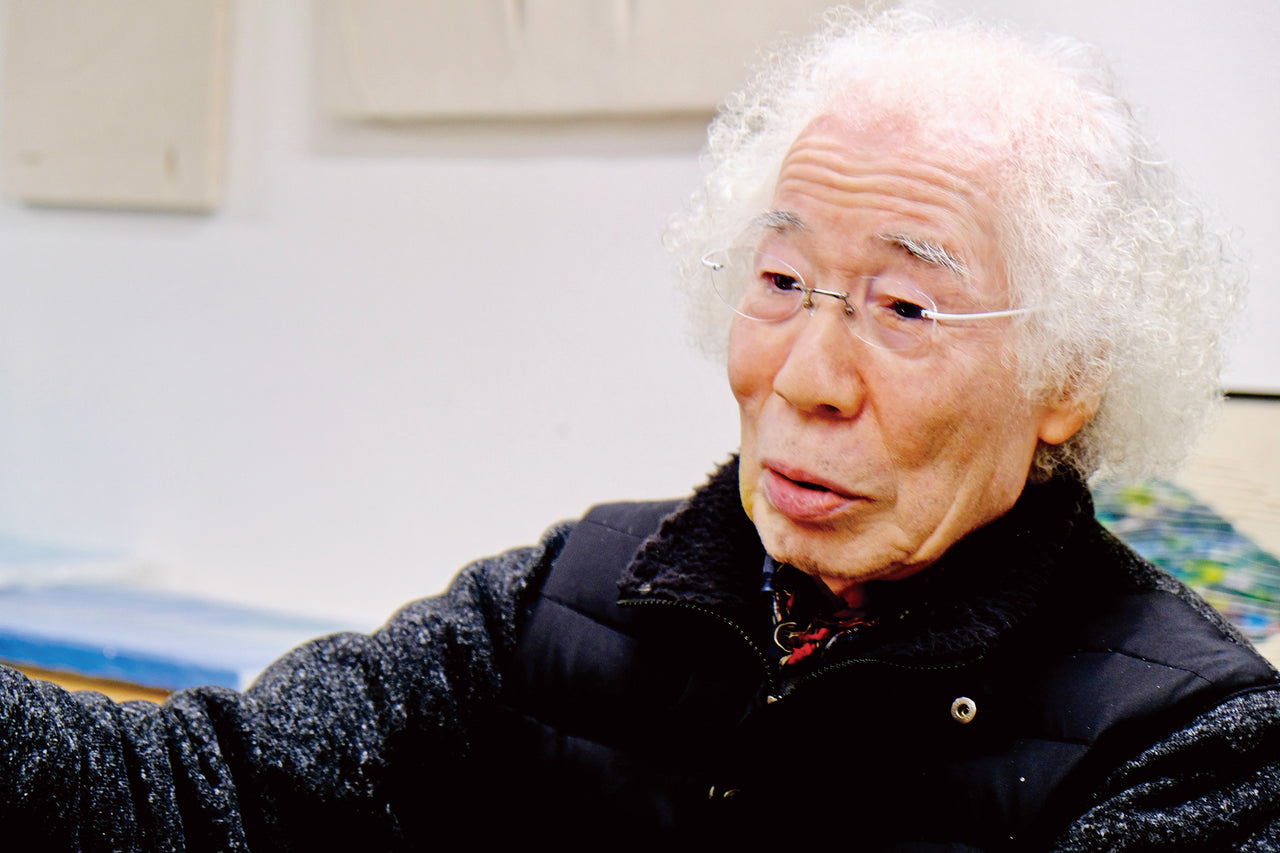
Tsuyoshi Maekawa
A project evolving the digitized archive of the book, “GUTAI STILL ALIVE 2015 vol.1”. The 13th edition features a 2013 interview with Tsuyoshi Maekawa, a 2nd-generation member of the Gutai Art Association known for his use of burlap fabric works. It explores his encounter with Gutai founding member, Jiro Yoshihara, his initial shock at Gutai's dissolution, and comprehensive talks about his works.
Tsuyoshi Maekawa is consistent in developing an individual expression using cloth materials like a jute bag.
Maekawa's studio, located in a quiet residential area of Minomo city, is not so far away from the memorial park of Japan Expo '70 site (Suita city, Osaka), in which still remains "Taiyo no To" statue by Taro Okamoto, the symbolic tower of the Expo. Tsuyoshi Maekawa is an artist of "the 2nd generation" of Gutai Art Association established in 1954. He exhibited in Gutai every year from 1959 through 1972, and is even now very active in making artworks. Recently, Gutai's past activities have been internationally recognized again, and Maekawa, who belonged to the group, has newly drawn attention.
At that time, there was no art group like Gutai where every member presented a truly individual artwork, and I thought, "This is Gutai."
―I've just now seen "Tsuyoshi Maekawa Exhibition -- from Gutai Period to Present" at the gallery in Osaka. The title containing the word "present" shows that you're now active in making new works including three-dimensional ones.
Maekawa (hereafter referred to as M): Thank you for your seeing my exhibition. Presented there are large works of my Gutai period and works with different taste from my past pieces.
―Can we say that you and Takesada Matsutani, who lives in Paris, are especially active among the few 2nd generation members of Gutai?
M: I think so. I would see Matsutani, who was a bit junior to me in Gutai, showing his work using vinyl adhesive to Mr. Yoshihara. He judges artwork, telling jokes: the more jokes, the better his evaluation of artwork; and his disregard means worst (laughter). Mr. Yoshihara is a person like that.
―I suppose that vinyl adhesive was then a new product sold on the market. You, like Matsutani, have used vinyl adhesive to fix folds of a work using jute bag.
M: Vinyl adhesive was then a really new material right after being put on sale.
―By the way, I hear that artists couldn't exhibit until they passed severe examination by Jiro Yoshihara, a representative of Gutai Art Association. You started to exhibit from 1959. I wonder how your presentation at Gutai was decided?
M: Firstly, in 1959, then not being a formal member, I exhibited in the 8th Gutai Exhibition at Kyoto Municipal Museum of Art, and I became a member of Gutai in 1962. Gutai usually didn't invite entries from non-members, but in that year, the association, like other koboten (open exhibition) groups, allowed non-members to exhibit, probably because the site was spacious enough. I was advised to exhibit by Gutai member Shozo Shimamoto, an acquaintance of mine then. Everything started with the exhibition, in which my work was viewed in a good position: on the first day, I saw Jiro Yoshihara and his wife sitting in the inner part of the lobby, which made my heart pound; and I heard that Yoshihara wanted to see me, and I came to him to pay my respects. Yoshihara, who looked very happy, asked me about my work and other various things. Other Gutai members seeing us said to me,"Yoshihara seems to have favored your work."
―Yoshihara actually favored your work, didn't he?
M: I was then not a member of Gutai yet, and I called him to tell that I'd like Yoshihara to see my work; he told me to visit his house with my work. I soon arranged a truck to carry my work to his house.
―How many?
M: About 20 pieces or so: mostly large works. The largest one was 200 gou-sized (approx., 260cm x 160-190cm).
―You showed not a few works to Yoshihara, weren't you?
M: Wishing him to see my work, I worked very hard till then. At first, I displayed all of them at the outside of Yoshihara's house. But, asked to take them inside out of the shopping street, I tried to bring them in front of the pine trees and display them inside the grounds. After all, I anyway could bring all of them inside by breaking a part of the entrance of the house because the pieces were too large. Yoshihara, carefully watching each one, highly praised the pieces. I deeply appreciated his judgment. Our conversation during the event was like this: Yoshihara said, "This color is good"; I answered to him, "Mr. Yoshihara, that is a color paint as it is"; and again he said, "But, that's good," adding, "For the next Gutai exhibition, leave all these pieces to have Gutai members see them." When I visited again him on the day they were to select entries for the exhibition, they had decided on my work for it, and Yoshihara asked me, "What do you think of these? I'd take all of them to the exhibition place, Takashimaya Department." I presented myself for every travelling exhibition of Gutai of that year, and now I remember being ironically told by other members that the Gutai exhibitions were like my solo exhibition. After all, my entries for Gutai were gradually reduced to 3 or 4 pieces from following exhibitions.
―You were exceptionally treated very well by Jiro Yoshihara from the very beginning of your career, weren't you?
M: There was something of that in him. Whether or not he liked a work was everything. Once he liked it, Yoshihara looked pleased very much, but if he didn't like a work even a bit, he kind of thoroughly criticized it. I remember that Yoshihara would not stop criticizing a woman artist's work despite of her crying. He never compromised about criticism on artwork. He put work first; he awfully disliked new members talking about what they wanted to do this or that way in the future or talking about their own view or thought -- "Show me your work before you talk about it" was what Yoshihara wanted to say, and so Gutai members could not help working hard, pretending to do nothing special for the following exhibition.
―You were favorably accepted in Gutai exhibition from the beginning of your career. Had Gutai Art Association already meant much to you then?
M: Gutai had a great impact on me. The group was completely different from other art ones and is still far beyond comparison with today's koboten groups. Every space at Gutai exhibitions would be filled with original works that could never be created by any other artists than Kazuo Shiraga, Sadamasa Motonaga, for example. I thought, "This is Gutai." I previously had exhibited in Modern Art like Chiyu Uemae and Shozo Shimamoto, already using jute bag for my work then with no folds.
―That is to say, it was at Gutai exhibition that you exhibited a work using jute bag for the first time, through which you intended appealing to viewers: you attached swollen jute bag to canvas and poured paint on it, which I think was a completely new manner of expression at that time. What motivated you to use jute bag as a material of art?
M: I only loved its rough surface, but, in my early career, I was simply painting on the surface, as Klee and Millet did. I loved such a work of that kind, and wanted to try it. In my period of exhibiting in Modern Art, I used jute bag without any device, simply painting on it with oil paint, if I can remember correctly, with the jute bag stitched up to some extent. Those works always passed the jury's examination, which I think is a proof that they were highly recognized.
―And, you changed the manner into dynamic expression adopting folds. Many of that kind of works made in your Gutai period have now been collected by art museums. Your work, however, changed again with Jiro Yoshihara's death and the dissolution of Gutai group, both in 1972. But, despite all the changes, you haven't stopped using cloth that started from jute bag as a material for work production, have you?
M: I suppose that I've been particular about the use of cloth: the expression that I had long continued during my Gutai period became a delicate work using folds of soft cloth produced by finely sewing by machine after the dissolution of the group. Favored with the change, those works were successively awarded at the Contemporary Art Exhibition of Japan, the Exhibition of Modern Best Art, and the International Art Exhibition of Japan.
Since that time, I've long been working in that style.―But, it doesn't mean that you suddenly changed from the powerful expression using jute bag to the current delicate style.
M: Of course, I was through one trial and error after another: Jiro Yoshihara's death and the dissolution of Gutai group had a profound shock on me then, but at the same time, I became to think that I must begin to step forward as an artist.
―Stitching like drawing fine lines and stretching cloth to a wood frame without creating wrinkles are a creative but very hard work, aren't they?
M: My work made by stitching seemed to have made Gutai members impressed, but it was actually hard to attach cloth without creating wrinkles by stretching the corners of a work. If I even slightly find wrinkles, I'm not satisfied until I do the work again. On the other hand, doing the work successfully after repeating failures makes me feel satisfied very much. Nobody will probably be successful though everybody wants to try.
―And, you've recently made pieces employing three-dimensional elements such as net-like material, as shown in your solo exhibition in Osaka.
M: Yes. In those pieces, there might be something of dynamism slightly going back to my Gutai period.
―I hear that your shows in America and other places are being planned. Is there any plan to do something like performance as an ex-Gutai member being active now?
M: Details about that are not yet decided. I only hope that the show will be an opportunity to let my work appeal to viewers as much as possible.
―We hope that you will develop your artistic activities even more in the future.
(Mothly Gallery, June 2013)
Read more about the “Gutai Art Association »
*Information in this article is at the time of publication.
